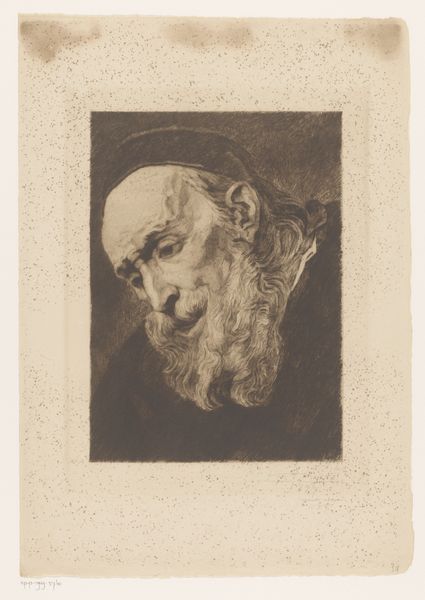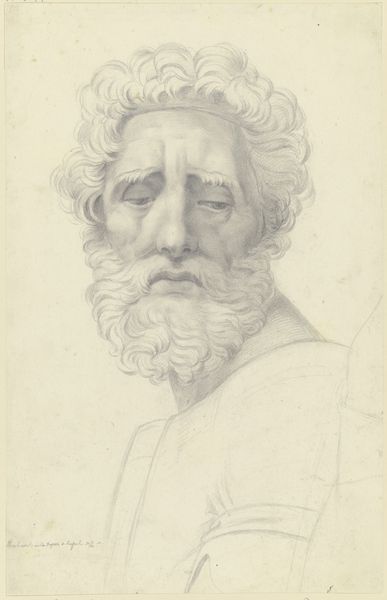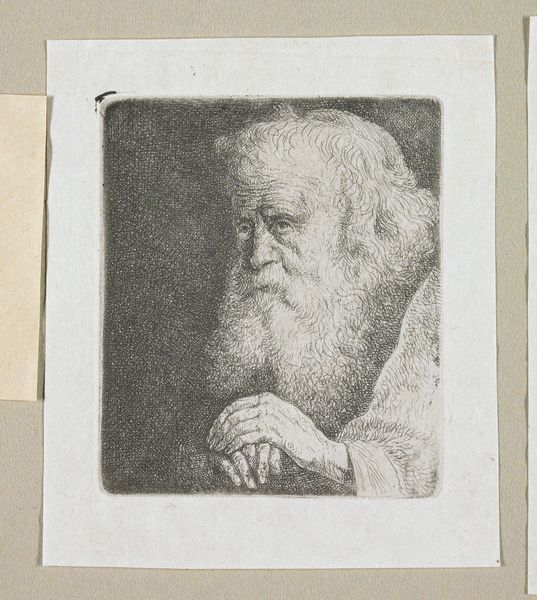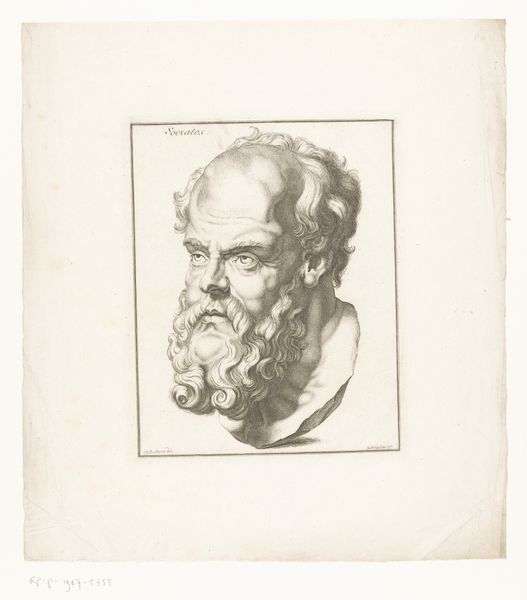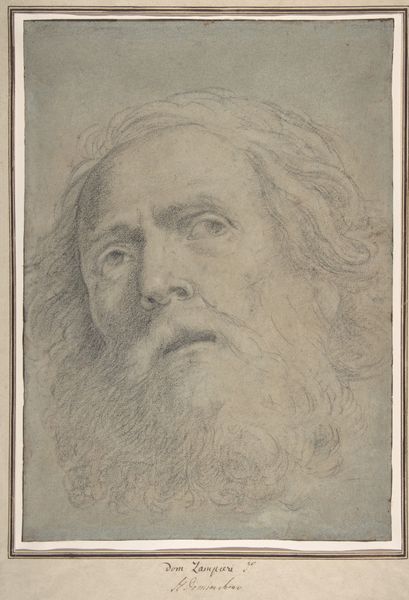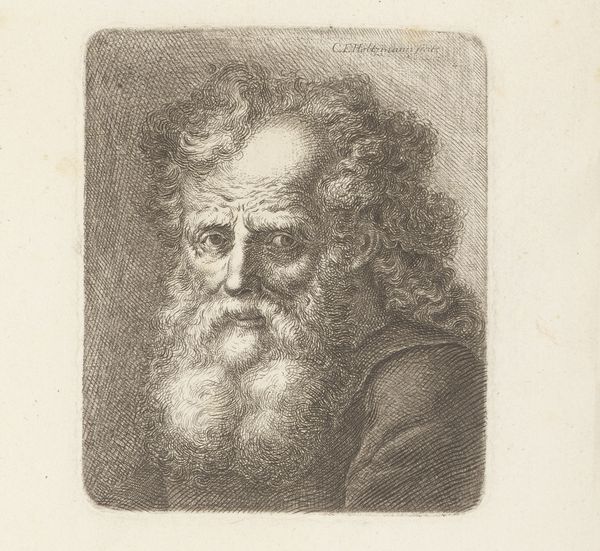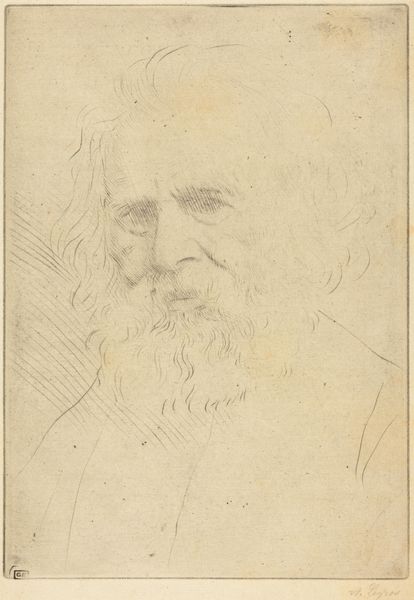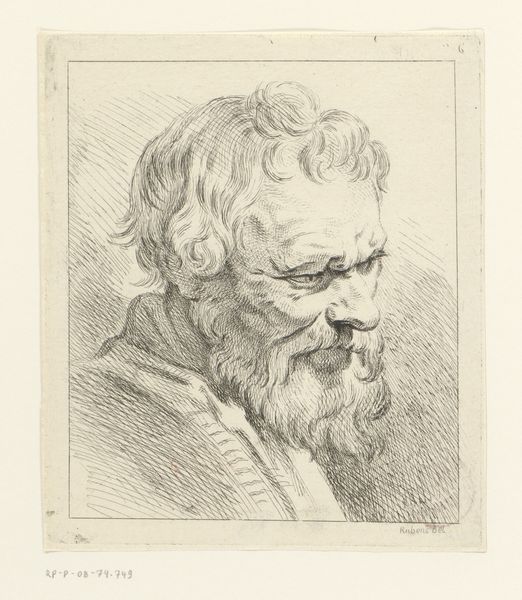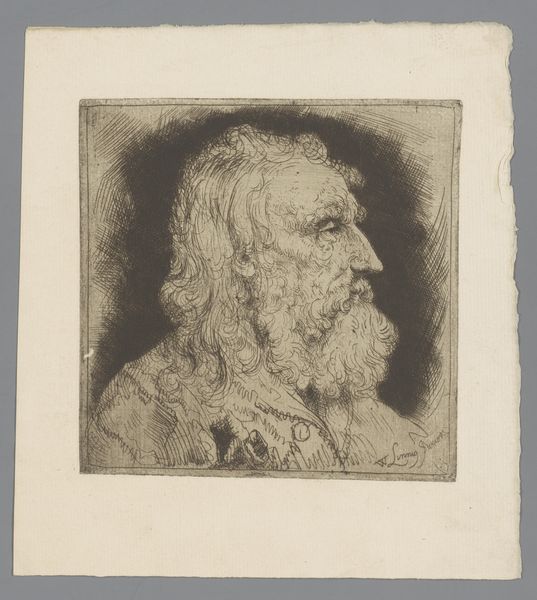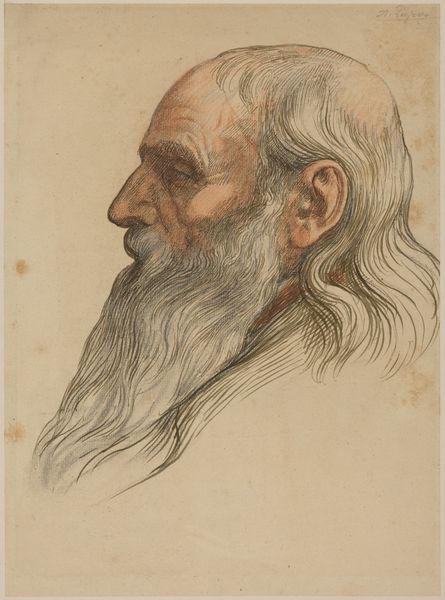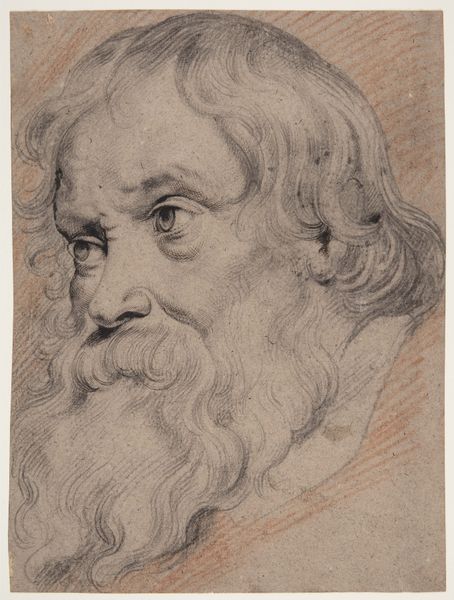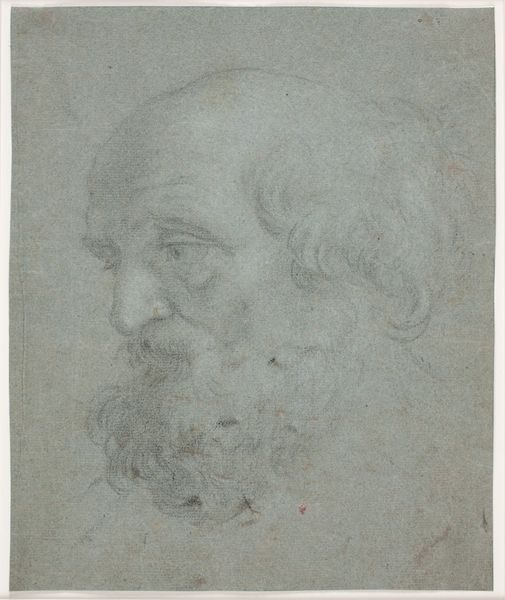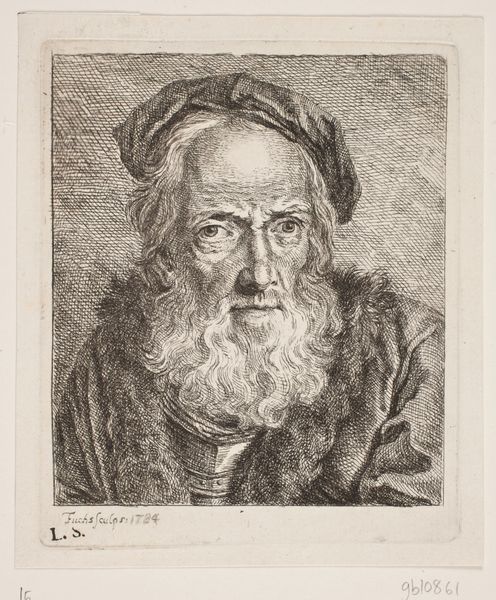
drawing, paper, pencil
#
portrait
#
drawing
#
baroque
#
figuration
#
paper
#
pencil
Dimensions: height 367 mm, width 255 mm
Copyright: Rijks Museum: Open Domain
Editor: This is a drawing from the 17th century, titled "Head of an Old Man with Beard, Looking Up," currently held at the Rijksmuseum, attributed to an anonymous artist. It's rendered in pencil on paper. There's such an evocative sense of contemplation in this man’s upward gaze. How do you interpret this work? Curator: The upward gaze certainly speaks volumes, but let’s consider the broader context of portraiture in the 17th century. This was an era of increasing interest in individual psychology and realism. But how does an “anonymous” artwork fit into our understanding of the art market and patronage of the time? Was this perhaps a study, an exercise, or a preparatory sketch? The inscription visible at the bottom of the page might tell us something. Editor: That's an interesting point. I hadn't really considered the context of who made it. So it might not have been commissioned for public display at all? Curator: Exactly! That dramatically shifts our perception. Consider the function of the piece: it allows for exploration of expression and character, possibly for use in a larger composition that promotes some kind of message. Who typically had access to art-making materials during this era? How would social status impact whose face, whose story got told? Editor: It probably indicates that only those with some financial means were able to either commision work from an artist, or practice the craft itself. This means most citizens were not recorded, but the upper classes were portrayed repeatedly. I suppose this upward-looking figure might represent a sage from the Bible? Curator: Possibly, which underscores the cultural weight attributed to age and wisdom during this era. The image likely served to propagate values that reflected back on wealthy, ruling families and justified their importance within the era. Editor: Wow, that completely changes how I view the drawing. I initially just saw it as a sensitive depiction of an old man, but now I understand it might reflect power structures in 17th-century society! Curator: Precisely. Art is never created in a vacuum. Exploring that intersection of artistic expression and social context helps us truly understand its power.
Comments
No comments
Be the first to comment and join the conversation on the ultimate creative platform.
